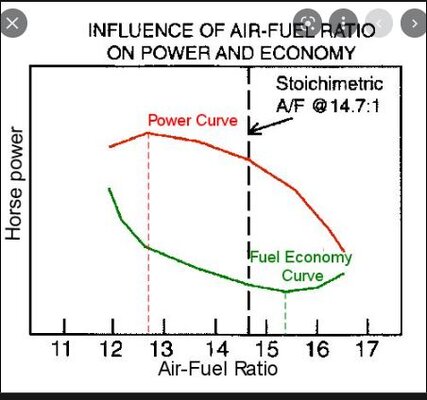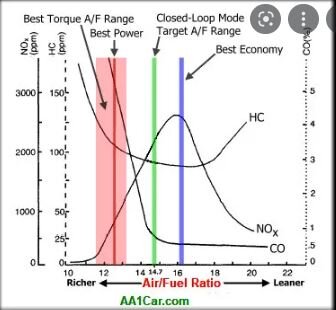Advanced timing should be much like more compression and get some of that lost performance back. Something that cannot be done at sea level without damage to the engine.
If they don't compensate as best they can, I doubt we can expect 50% of the sea level performance.
I remember the poor performance of the old muscle cars on Donner Summit (uphill on freeway to 7,240 feet elevation) very well. Gutless compared to the small EFI engines of today. Normally cannot even tell the difference between sea level and 7K feet with modern EFI engines.
-Don- Auburn, CA
Trust but verify Don. You are repeatedly saying thing that are against the laws of physics.
Timing will not compensate in any way towards the atmospheric pressure phenomena. The only way timing can help an engine is if the timing is advanced the flame front starts sooner and can result in higher BMEP (Brake Mean Effective Pressure) in the combustion chamber.
The huge drawback is that advancing the timing can result in detonation - uncontrolled burning - which can dangerously raise pressure levels and result in failed head gaskets and even broken pistons. This can somewhat be reduced by running a higher octane fuel. Contrary to what you said this can happen at any altitude and is often noticed at higher altitude or hotter days when one is naturally pressing the gas pedal harder.
A motorcycle or car engine is also suffering the same power loss at altitude as a generator if it is not turbo or super charged. You don't notice it because rarely is one using "full throttle" to leave a stop sign and there truly is "excess horsepower" available in most vehicles. I can guarantee that my '59 VW microbus with a 25hp engine was sucking wind at 4,000 feet much less 7,000 feet - LOL.
If you ran the same vehicle on a 1/4 mile strip you would have much lower times at 7,000 feet vs. sea level.
Just so we are using somewhat precise definitions.
Detonation - The ignition and uncontrolled burning of the fuel air charge caused by excessive cylinder pressure.
Pre-Ignition - The early lighting of the fuel air charge prior to the ignition event caused by a carbon hot spot or other unnatural ignition source in the cylinder chamber.
Edit to add - As Mark indicates modern engines have knock sensors, O2 sensors and computers to adjust the timing on the fly to maintain the best efficiency. This does (for sure) maintain the maximum power possible to the highest altitudes possible.
In adjusting the twin carbs on my MG I road set the timing. Basically it's driving up a shallow hill in 3rd gear from low rpm to redline. Each time you advance the timing until you start to get a ping and hten you back off a bit.
This does two things. Get the BMEP up as high as possible for a given octane and because combustion starts earlier and has longer to complete results in better gas mileage and lower emissions - less unburned fuel exiting the exhaust.


